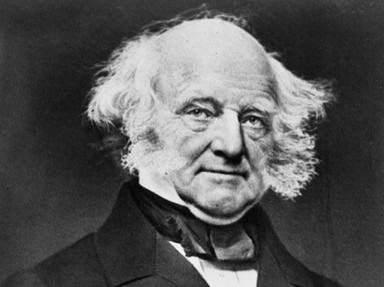Quiz Answer Key and Fun Facts
1. President Martin Van Buren did not speak English as his first language growing up as a child in Kinderhook, New York. Which was his native language?
2. In Martin Van Buren's election day as President in 1836, the electors from Virginia refused to vote for his Vice Presidential running mate, Richard Mentor Johnson. Why did they refuse to vote for Johnson?
3. President Andrew Jackson nominated Martin Van Buren to serve as U.S. ambassador to Great Britain in 1831. Who blocked Van Buren's confirmation as ambassador in the Senate?
4. A widower, President Martin Van Buren designated his daughter-in-law, Sarah Angelica Singleton Van Buren, to serve as First Lady of the White House. Who arranged the introduction of Van Buren's son Abraham to Miss Singleton, at a White House reception in March 1837?
5. What nickname did Van Buren get, which stuck with him during all his political years?
6. Joseph Smith, founder of the Mormon Church, met with President Martin Van Buren privately in 1839 while seeking the President's assistance to combat an "Extermination Order" against the Mormons issued by Governor Lilburn Boggs of which state?
7. Which White House state room, where the official White House Christmas tree stood each year, had traditionally retained the same color decor that was chosen for it by President Martin Van Buren in 1837?
8. During his four-year term, President Martin Van Buren issued only one veto of Congressional legislation. Why did he issue this "pocket veto"?
9. President Martin Van Buren rented which District of Columbia estate that also served as a summer residence for future Presidents John Tyler, James Buchanan, and Grover Cleveland?
10. Who did the Democratic Party choose at Baltimore in May 1840, to be President Martin Van Buren's running mate as Vice President for re-election?
Source: Author
socalmiguel
This quiz was reviewed by FunTrivia editor
crisw before going online.
Any errors found in FunTrivia content are routinely corrected through our feedback system.
